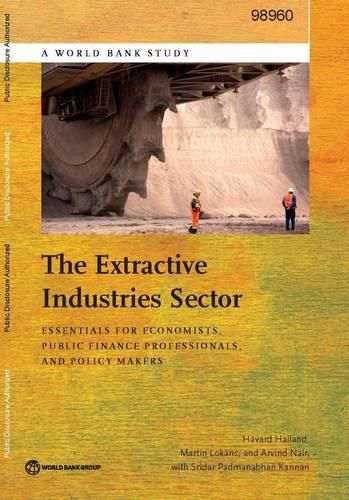Readings Newsletter
Become a Readings Member to make your shopping experience even easier.
Sign in or sign up for free!
You’re not far away from qualifying for FREE standard shipping within Australia
You’ve qualified for FREE standard shipping within Australia
The cart is loading…






The extractive industries (EI) sector occupies an outsize space in the economies of many developing countries. Economists, public finance professionals, and policy makers working in such countries are frequently confronted with issues that require an in-depth understanding of the sector. The objective of this volume is to provide a concise overview of EI-related topics these professionals are likely to encounter. The volume provides an overview of issues central to EI economics; discusses key components of the sector’s governance, policy, and institutional frameworks; and identifies the public sector’s EI-related financing obligations. Its discussion of EI economics covers the valuation of subsoil assets, the economic interpretation of ore, and the structure of energy and mineral markets. The volume maps the responsibilities of relevant government entities and outlines the characteristics of the EI sector’s legal and regulatory frameworks. Specific key functions of the sector are briefly discussed, as are the financial structures that underpin environmental and social safeguards; investment of public revenues generated from oil, gas, or minerals; as well as extractive-based economic diversification. The authors hope that decision makers in ministries of finance, international organizations, and other relevant entities will find the study useful to their understanding and analysis of the EI sector.
$9.00 standard shipping within Australia
FREE standard shipping within Australia for orders over $100.00
Express & International shipping calculated at checkout
The extractive industries (EI) sector occupies an outsize space in the economies of many developing countries. Economists, public finance professionals, and policy makers working in such countries are frequently confronted with issues that require an in-depth understanding of the sector. The objective of this volume is to provide a concise overview of EI-related topics these professionals are likely to encounter. The volume provides an overview of issues central to EI economics; discusses key components of the sector’s governance, policy, and institutional frameworks; and identifies the public sector’s EI-related financing obligations. Its discussion of EI economics covers the valuation of subsoil assets, the economic interpretation of ore, and the structure of energy and mineral markets. The volume maps the responsibilities of relevant government entities and outlines the characteristics of the EI sector’s legal and regulatory frameworks. Specific key functions of the sector are briefly discussed, as are the financial structures that underpin environmental and social safeguards; investment of public revenues generated from oil, gas, or minerals; as well as extractive-based economic diversification. The authors hope that decision makers in ministries of finance, international organizations, and other relevant entities will find the study useful to their understanding and analysis of the EI sector.